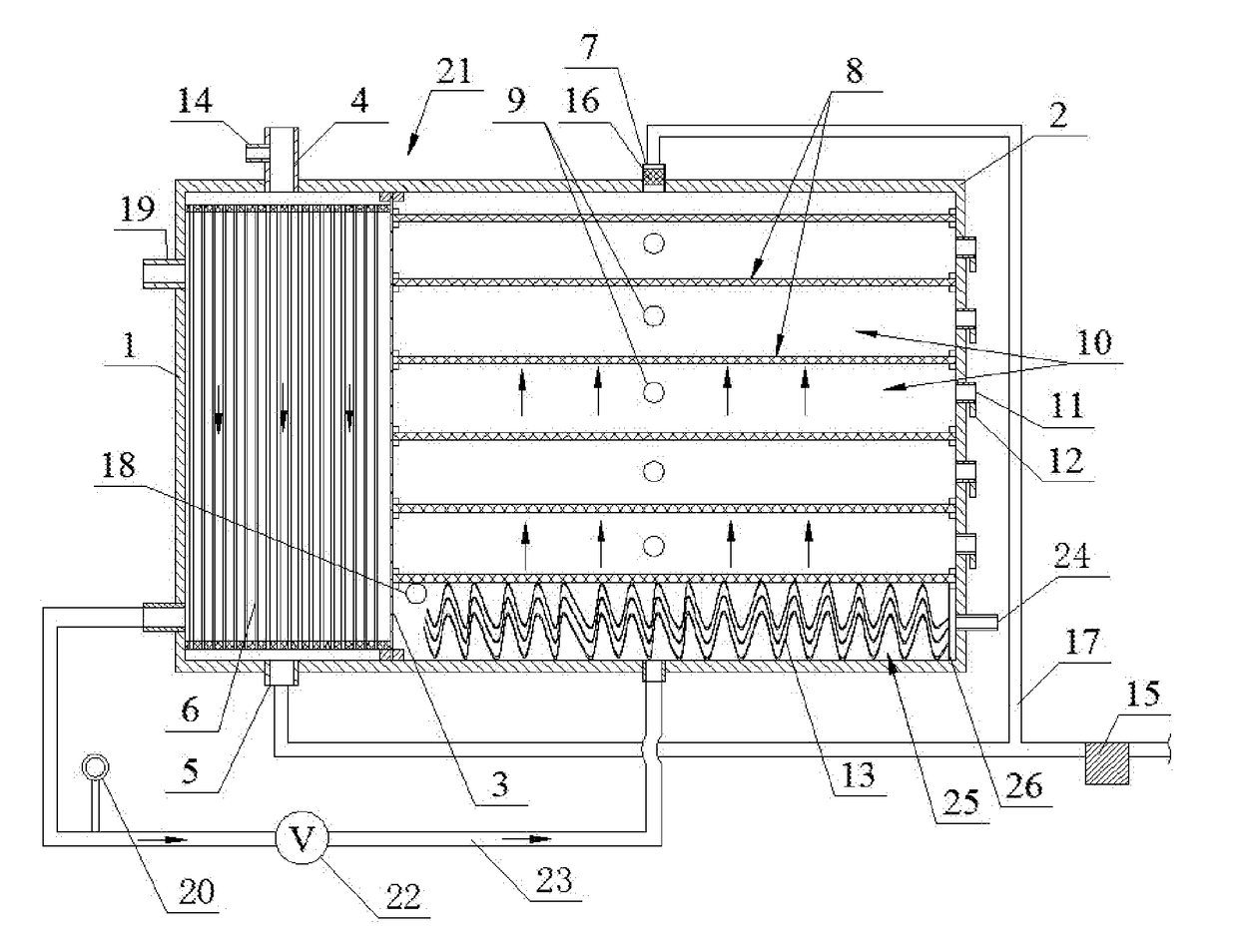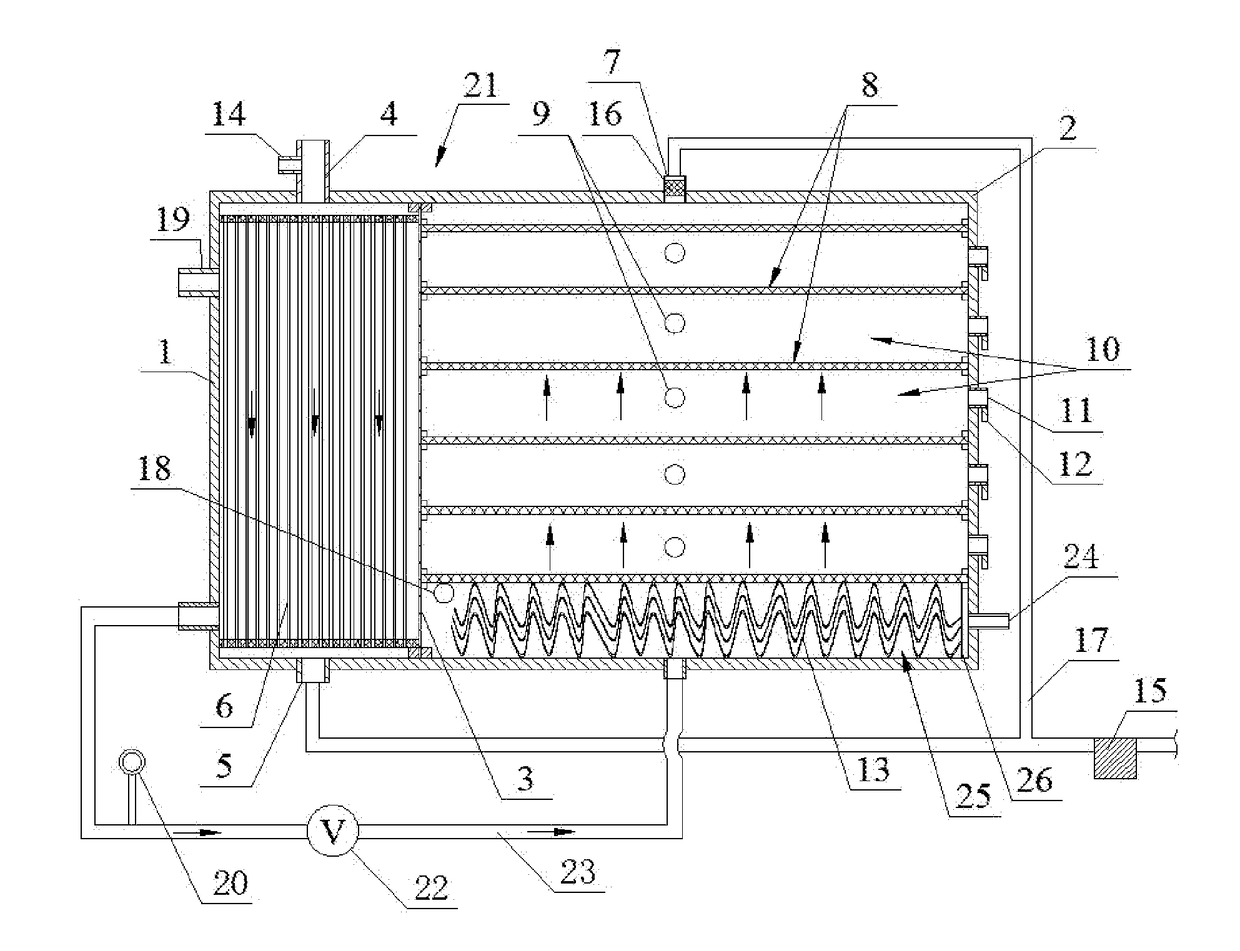Bioartificial liver device
a liver and artificial technology, applied in the field of bioartificial liver devices, can solve the problems of inability to apply liver transplantation in a large scale, physical artificial liver devices have the defect of absorbing, current bioreactors in hollow fiber type have defects including a small capacity and a small cell load, etc., to achieve the effect of improving the cell culture effect, increasing the cell load of the device, and reducing the amount of waste of resources
- Summary
- Abstract
- Description
- Claims
- Application Information
AI Technical Summary
Benefits of technology
Problems solved by technology
Method used
Image
Examples
Embodiment Construction
[0024]To further illustrate the invention, experiments detailing a bioartificial liver device comprising semi-permeable membranes are described below. It should be noted that the following examples are intended to describe and not to limit the invention.
[0025]As shown in FIG. 1, a bioartificial liver device comprises: a housing comprising a top wall, a bottom wall, and a side wall; a chamber is confined by the housing 21. The chamber is subdivided into a plasma-separation chamber 1 and a bioreaction chamber 2 by a first semi-permeable membrane 3. The top wall and the bottom wall are adapted to be disposed substantially horizontal with respect to the ground; the top wall is adapted to be disposed above the bottom wall with respect to the ground; and the side wall connects the top wall with the bottom wall.
[0026]A blood inlet 4 is disposed on the top wall and communicates with the plasma-separation chamber 1, for the purpose of introducing blood of the patient into the plasma-separati...
PUM
| Property | Measurement | Unit |
|---|---|---|
| temperature | aaaaa | aaaaa |
| pore diameter | aaaaa | aaaaa |
| pore diameter | aaaaa | aaaaa |
Abstract
Description
Claims
Application Information
 Login to View More
Login to View More - R&D
- Intellectual Property
- Life Sciences
- Materials
- Tech Scout
- Unparalleled Data Quality
- Higher Quality Content
- 60% Fewer Hallucinations
Browse by: Latest US Patents, China's latest patents, Technical Efficacy Thesaurus, Application Domain, Technology Topic, Popular Technical Reports.
© 2025 PatSnap. All rights reserved.Legal|Privacy policy|Modern Slavery Act Transparency Statement|Sitemap|About US| Contact US: help@patsnap.com


